Nine years ago, in 2014, electric aircraft were mostly experiments and the beginning was challenging. Several ill-fated projects attempted to electrically power airplanes that were inappropriate for such a powerplant. Batteries of the day had lousy power-to-weight ratios. Enough juice to lift and fly a two seater, much less a four seater, by an electric motor made for very short duration flights, measured in minutes not hours. An electric Cessna 172 project never succeeded; hardly a wonder.

More from the Top-50 videos on Dave Loveman’s YouTube channel.
Similar challenges face more than 350 air taxi start-up businesses. Sure, someday you might zip around big cities using UberAir but I think that remains years in the future. Range anxiety felt in electric cars becomes much more intense in an aircraft.
On the other hand, electric Part 103 aircraft enjoy two enormous advantages: (1) they only need to fly 30 minutes to an hour to deliver all the fun their owners have in mind; and (2) since Part 103 aircraft are the lightest in powered aviation, lifting them by electric power and batteries is far more achievable with today’s technology. In 2023, an hour’s flying on a Part 103 ultralight is quite reasonable. I’ve written about many of these; use Search if interested in exploring.
Enter EMG
Electric Motor Glider
An interview I did with Rainbow’s Brian Carpenter about his EMG project proved very popular, becoming one of our Top 50 over the last 16 years. We recorded that video at EAA AirVenture Oshkosh 2014.
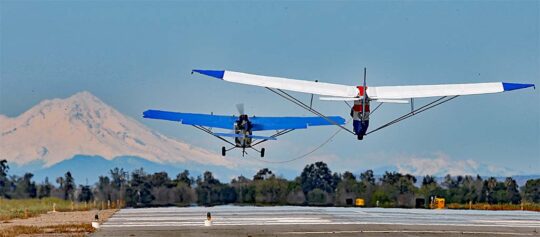
An EMG (Electric Motor Glider) airframe was tested by towed flight.
At the time, the project relied on Quicksilver Aircraft, which produced about 25% of the components used on EMG. Rainbow had long represented and knew Quicksilver very well. It was a reasonable cooperative venture. Regretfully, the collaboration went south when Quicksilver’s enterprise dissolved and the supplier ultimately withdrew from the project.
Yet what really put the project on ice for a while was “the break-in robbery we experienced,” said Brian and Carol on a phone interview recently. You can read more of that below in excerpts taken from Brian’s entertaining blog.
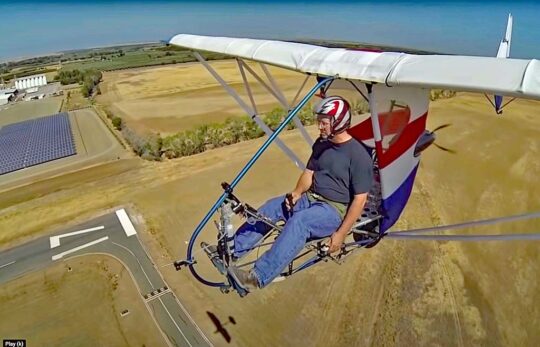
Brian engineered this delicious view with battery-charging solar arrays in the top left, the home runway just beginning, and his shadow underneath.
Enthusiasm had been high. Customers were lining up. Yet people with bad intentions stole so much gear from the Carpenters’ Hangar 7 operation that the project had to restart almost from scratch. They tried to protect themselves with cameras and security but ultimately, the couple elected to depart California completely. They picked up sticks and moved to Kingsville, Missouri where they continue their very active Light Sport Repairman training courses. They are the nation’s leaders of this activity and have an extremely loyal following that thinks highly of their training techniques.
See more on Rainbow in this article describing their relocation and see a map of where their graduates reside (here’s an updated map). They have graduated 6,000 students from nearly every U.S. state and over 20 countries.
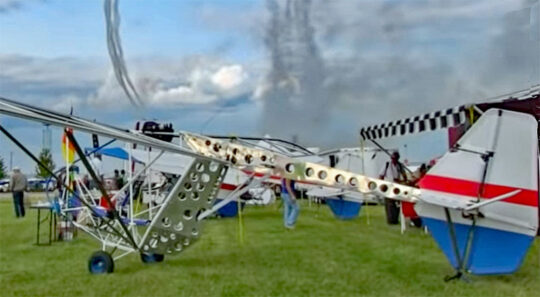
EMG seen in “bare bones” while the AirVenture airshow goes on furiously in the background.
Brian and Carol worked hard building their enterprise. With many years of experience, they weren’t about to release a half-baked project into the market. “We’ve invested nearly $300,000 dollars in the EMG-6 project,” the partners noted. By any measure in light aviation, that’s a substantial chunk of change.
In his own words, here’s Brian’s description from his blog posts…
“The original project started as a collaboration with Quicksilver aircraft utilizing some of their existing tooling and technology to reduce the cost of the initial design. Two years into the project Quicksilver announced their bankruptcy leaving us high and dry with no notice and a design that we could no longer produce without a significant investment in tooling.
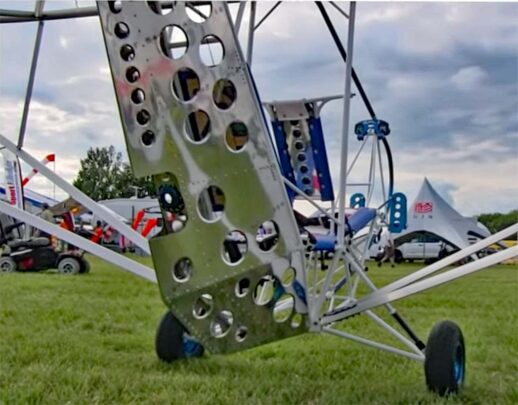
“Undeterred, we persevered and completed prototype #2. In the bankruptcy of Quicksilver we lost the templates for building the Dacron sailcloth covers.” With little alternative, Brian related, “We started the process of building a new set of templates for the Dacron sailcloth-covered wings and the new aircraft design.”
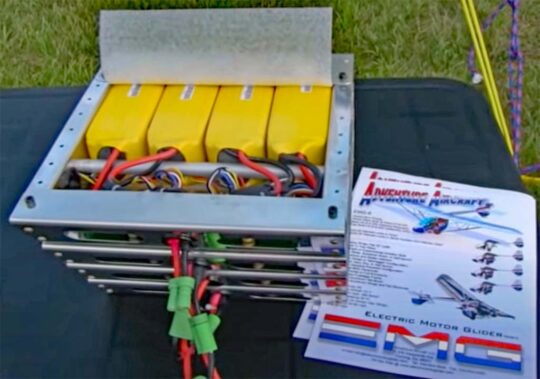
Now for the bad news. Brian continued, “In November 2017, we had a break-in and robbery … a lot of stuff was taken, probably close to $60,000 worth. This was devastating on many fronts [and we got] no help from the police department. Our insurance company found a loophole and were absolved from any responsibility. The stress on [our staff] after the break-in was quite high.”
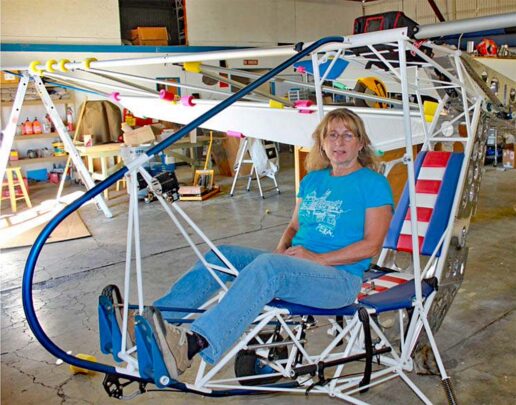
Before being put on hold by events a two-seat project had also been assembled.
So, where [is EMG] today? “The good news is, we’re not quitters,” Brian emphasized. “Our Adventure Aircraft company, which was a subsidiary of Rainbow Aviation [that we] started primarily to focus directly on the EMG-6, was disbanded and all of the assets were transferred to Rainbow Aviation.”
Here in late summer 2023, the future of EMG is uncertain. However, for those who are truly enamored of this project can access all the plans on Rainbow’s web page. “Plans are free on the website,” said Carol.
As a homebuilder project without support, it may be difficult for most builders. “CNC machines are needed to make some of the components,” Brian said. “Materials we bought from Quicksilver are not available.” (Current Quicksilver models supplier Air-Tech, Inc., may have some of what is needed — the EMG parts were standard Quicksilver items and Air-Tech has full capability for all Quicksilver models except the GT500. Here’s an article about that change of Quicksilver ownership.)
Will the EMG
Project Survive?
At present, Rainbow Aviation is focused on their Repairman training business, a vital element of the light aircraft market. Although interest in the EMG video was high, the industry and owners likely benefit most if the Carpenters pay sharp attention to their main enterprise, at least while Mosaic is going through its final stages.
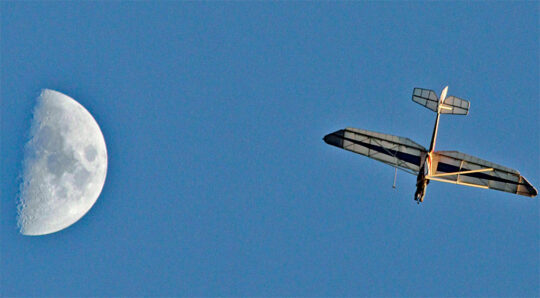
Yet with Mosaic throwing curveballs at their essential Repairman training courses, Brian and Carol are keeping a tight focus on providing comments and solutions to FAA.
One day EMG might reemerge, but yes or no, this project fascinated hundreds of thousands — literally, as nearly 400,000 have viewed the 2014 interview produced by Dave Loveman’s YouTube channel.
ARTICLE LINKS:
- Original EMG interview from 2014, via direct link to YouTube’s “Light Sport and Ultralight Flyer” channel
- Rainbow information, full contact info plus articles on this website
- Article on Rainbow’s move away from California, with info on what you can do after completing one of their courses
- Rainbow’s EMG project page, company website
- Find a mechanic trained by Rainbow using this map
One More Thing
Now that Mosaic’s NPRM has been released…

Use the link to reach Rainbow Aviation on YouTube where you can learn more. Do it soon — the clock is ticking!


Glad to see the plans open-sourced, though I feel that you still can’t beat an IC engine for energy storage density. Has anyone explored using this to make a more conventional motor glider with a Rotax or similar? This seems like a great platform for having fun, though maybe a used ultralight is a better choice for anyone wanting to go this route.
Yep. See Gabriel Devault’s conversion of a Sonex Motorglider using a Zero Motorcycle. It’s a 2 seater I think so not 103 but you get the idea. https://www.youtube.com/watch?v=wIgskLOHNko
If one wants duration in an electric ultraglight one must have a cleaner aerodynamic design to not waste energy. But then 103 isn’t really suited to long range, but that shouldn’t stop one from making improvements.
I wish nothing but the best for Rainbow Aviation and the EMG project. That type of innovative work is definitely a labor of love rather than a money-making endeavor. And to be sure the EMG is just a very neat Part 103 aircraft.
That said, with regard to the break-in, when I start reading things like “the police wouldn’t help” and “insurance didn’t pay because of a loophole”, my keen spidey-sense goes off and – in the words of Paul Harvey – I then want to hear “the rest of the story”. Because, without engaging in unfair speculation, I suspect there probably IS more to that story.
In addition the the great points that they make about Light Sport repairmen, they also provide excellent suggestions regarding Experimental repairman training. I suggest that all light sport pilots and experimental owner (and future owners) watch this video and make comments on the NPRM website.
Thank you Dan — I am a great fan of Brian and Carol’s work. Could you point us to a quick summary of how MOSAIC will affect Light Sport Repairman and/or other owner-performed maintenance?
A quick summary is quite a challenge. They put a lot of work into their videos on exactly this subject. Please try that.
However, here is one of my presentation slides created to encourage watching those videos…
Click/Tap —> Maintenance Slide
Apologies — I went to the YT site and failed to find these videos. Will look again. Thank you!
Try this —> Mosaic on Rainbow YouTube